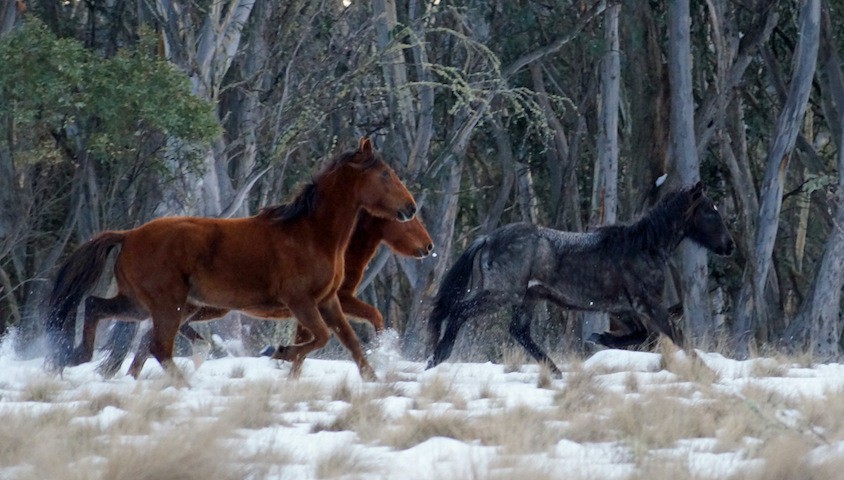With the consultation period for the Kosciuszko National Park Wild Horse Management Plan drawing to a close, professor Don Driscoll has led a group of 42 scientists in asking the NSW government to implement effective control methods on feral horse populations.
For many years, the issue of feral horses in Australian alpine environments has been a source of fierce debate, dividing members of the public on how best to control or remove populations and so limit the amount of damage they wreak.
The ‘brumby’ is a source of great sentimentality for some Australians, but the matter has been further stigmatised by footage released after the aerial culling of feral horses in 2000 at Guy Fawkes National Park.
Driscoll, an ecologist from Deakin University’s Centre for Integrative Ecology, said the group of scientists have written separately to NSW premier Mike Baird to express their view that feral horse control is essential to protecting our alpine environments, citing the expertise represented by the group.
“Most of us have direct research experience in the Australian alps and in practical land management decision-making,” he said.
“It is this deep knowledge of ecology and management which allows us to draw our conclusions that rapid, humane horse control is essential for Kosciuszko National Park to perform its primary function of biodiversity conservation.”
The estimated number of feral horses across the entirety of Australia is estimated to be around half a million, with those in national parks causing ongoing damage to native ecosystems.
“Impacts have been documented to its streams, wetlands and catchments and we know that feral horses damage waterways, degrade soil, spread weeds and alter vegetation which is expected to have impacts on native fauna,” Driscoll said
With Kosciuszko NP’s feral horse population estimated to be around 6,000-strong, Driscoll said any management plan needs to dramatically reduce numbers in a short period of time.
“Given that horse populations increase at up to 20 per cent every year, rapid reduction in an initial management phase is important.
“For example, at the current population size of 6,000, potentially up to an extra 1,200 horses must be managed next year. If the population was reduced to 100, an extra 20 horses would need to be managed in the following year.”
By rapidly reducing the population in the early phase of the management plan, fewer animals are predicted to suffer and die, while also costing the government less over time.
Professor Driscoll has previously acted as a spokesperson for humane control methods, most famously when footage emerged of starving horses appearing to turn to cannibalism in order to survive.
To read more about the history of the feral horse debate, see Jessica Hancock’s analysis as originally published in Bushwalk Australia.


